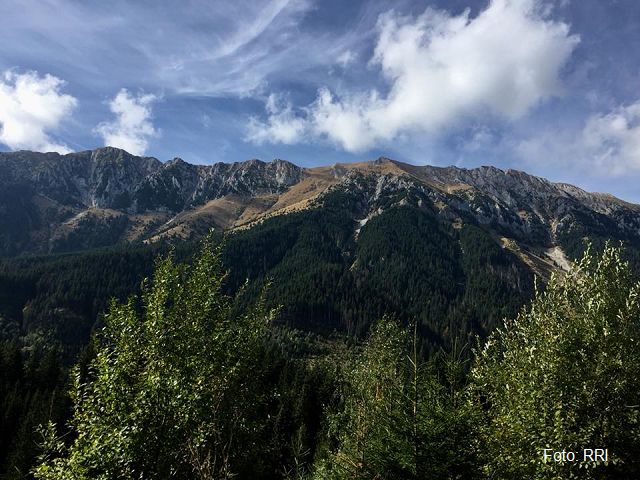Wild Fauna Watching in the Carpathians
Today we will make an incursion in areas far away from the pollution and crowding of cities

Daniel Onea, 08.10.2020, 13:22
The World Wide Fund for Nature estimates that the Carpathians are covered in around 320,000 hectares that can be considered old growth forest, of which 250,000 on Romanian territory. Today we will make an incursion in areas far away from the pollution and crowding of cities, where we will admire century-old trees and animals such as the Carpathian bear, the wolf, and the bobcat in their natural habitat.
Hermann Kurmens is a biology teacher and tour operator, owning a B&B in Magura village, Moeciu commune, in Brasov County. He told us that Romania has an impressive biodiversity, which is barely used to its capacity as a tourist destination:
“You dont need to go to the African savanna to watch animals in the wild, you can just come to Romania and go to the mountain forests. We know that Romania has the greatest density of bears, wolves, and bobcats in Europe, one third of the population for these animals is in Romania. There are wild animals spread all around the mountains. Greater concentrations are to be found in the mountain counties of Harghita, Covasna, and Brasov. We started with an observatory in the Fagaras area in 2000.”
Wildlife watching in the Carpathians can be done in an organized manner, as a tourist, but that has only been the case recently, as Hermann Kurmens told us:
“In the 70s and 80s there was a lot of hunting and a lot of trophy selling. Tourists came from Western Europe, paying between 5,000 and 12,000 dollars for the experience. In time, the administrations of protected areas came to understand that, even though this takes more work and is more difficult, you can earn by running a wildlife observatory. Earnings are there for the long term. A bear lives for about 30 years, and if it gets shot at four years of age, then you have nothing there, while a 20 year-old bear is still to be watched in the wild by tourists. It was pretty hard for us to convince the administrations of the 2000s, because it was so much easier to bring in a hunter from the West. All it took was three days of preparation, the tourist shot the animal, the administrations cashed in. However, things have changed radically. In this area we have already set up 15 observatories, and they became a stronger and stronger tourist attraction. People come here from all over Europe to watch the animals.”
We asked Hermann Kurmens how such a tourist package would unfold:
“The tourists are accompanied by an expert guide, and there is also a forest ranger or warden, usually armed. The agency provides all-terrain vehicles, which drive up to 100 meters away from the observatory, then the rest is on foot. The tourists go through thorough training before the trip. There is no talking after getting out of the vehicle, and everyone walks quietly. There is no food on the trip, this can attract the bears right to the observatories. Clothing has to be appropriate, with no strident colors. We have to have appropriate gear for trekking in the mountains, in case of rain or bad weather. It is also a very good idea to bring your own binoculars, and, of course, your camera.”
Wildlife watching is definitely a tourist attraction, but it is also only one component. It is part of a seven day schedule blending several types of tourism. Tour operator and biology teacher Hermann Kurmens told us about it:
“This program is a blend of nature and culture. We start off in the village of Magura, and go on several days of mountain strolls around the Piatra Craiului Massif, with emphasis on the flora and the fauna. We travel to an out of the way cabin, then we go to Bat Cave, where we have three different species of bats. We also visit Bran Castle, because we also make a point to make culture part of the schedule. For instance, we visit a fortified church in the village of Vulcan, the famous Black Chuch, with its medieval walls. This is how we blend culture and nature.”
Foreign tourists come from all over Europe, and also from the US, Canada, and even Australia. Most of them come here through their agents in Britain. Here is Hermann Kurmens:
“Generally, westerners are most interested in nature. For instance, Brits are the most interested, because they cut down their forests over 200 years ago. With the forests gone, the bears, wolves, and bobcats are gone. They appreciate nature much more for this reason. They are delighted to see free roaming bears, but they get happy seeing even a frog or a bird that they no longer have, such as the bullfrog. They are very happy to see famous endemic species from Piatra Craiului. They are equally delighted by the local birds, such as the crying eagle.”
Here is a perfect way to spend your time in the heart of nature, far from the din of the city. People who have chosen this package tell us that it recharged their batteries for a whole year.






























